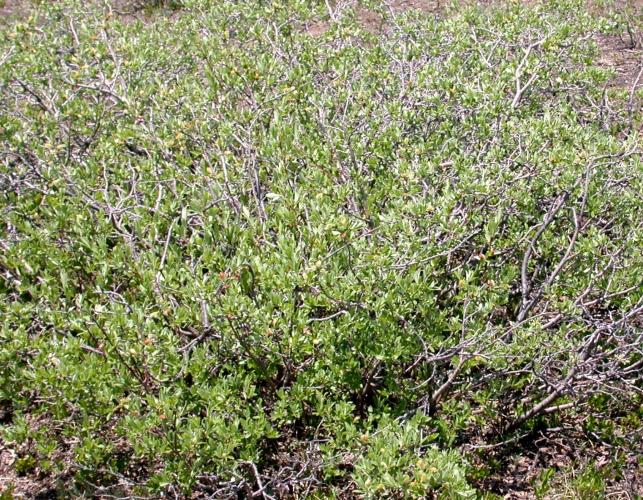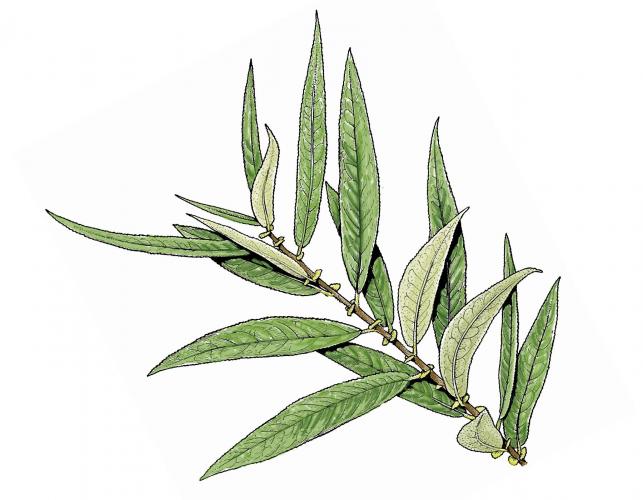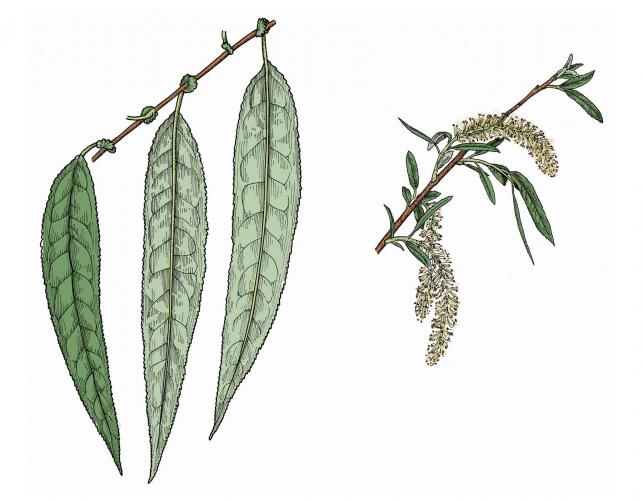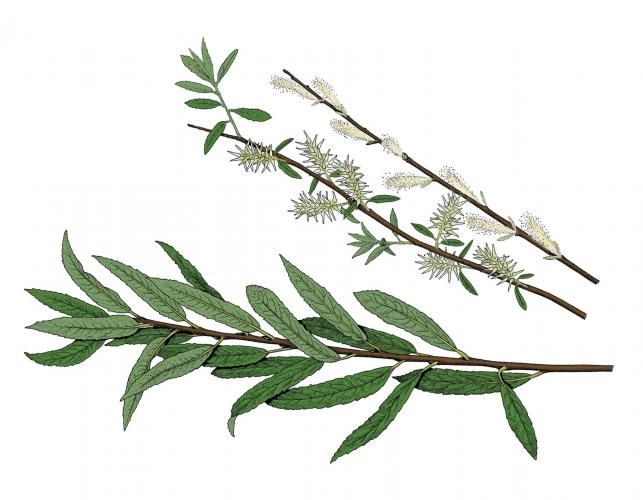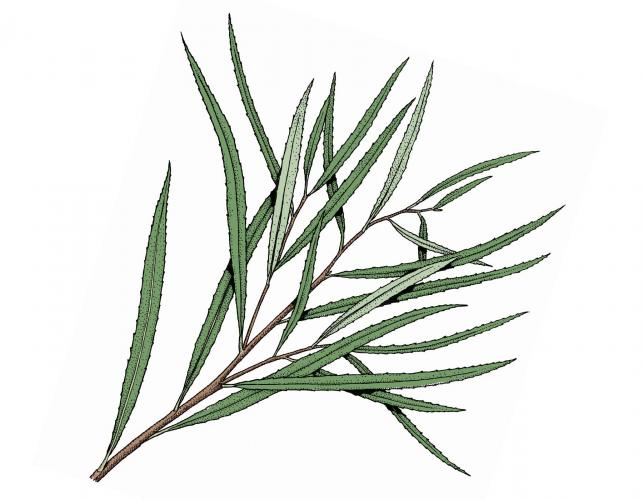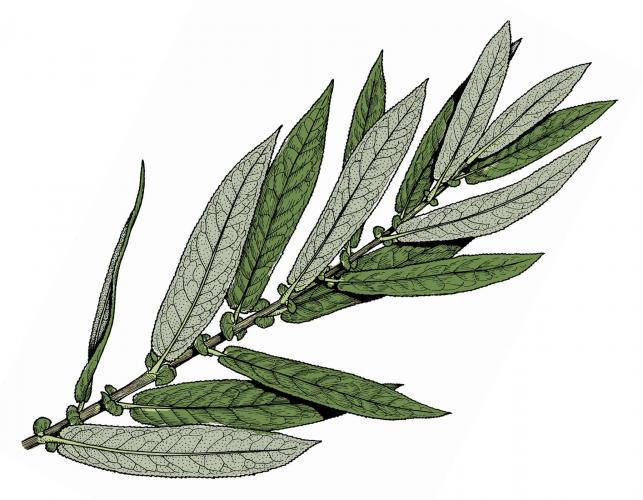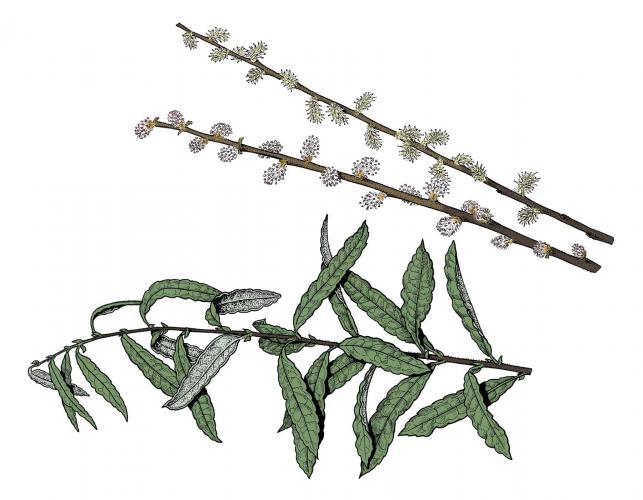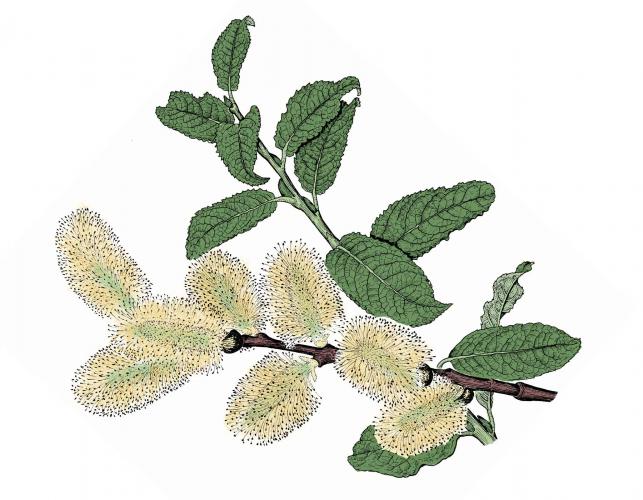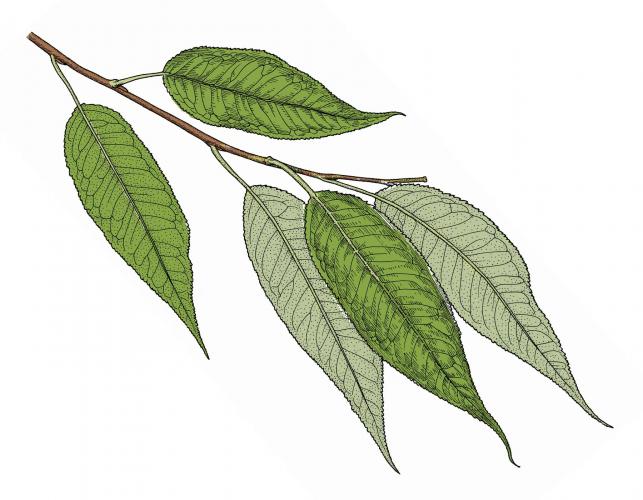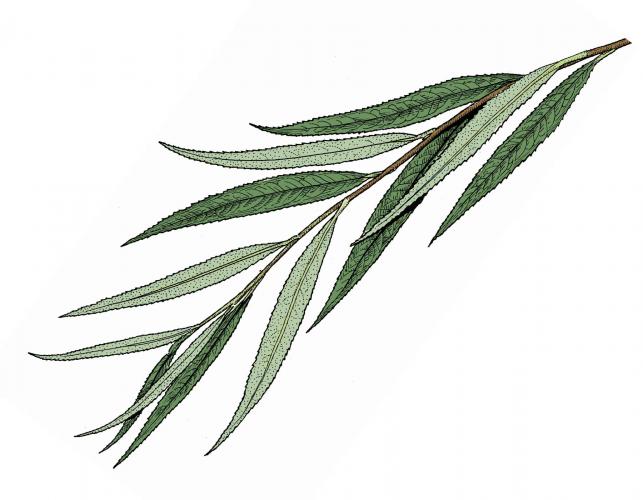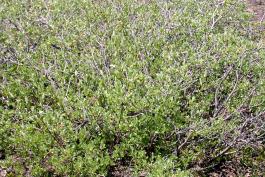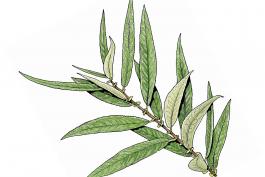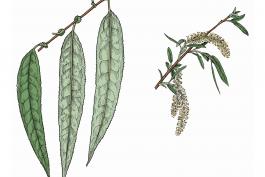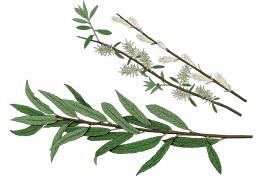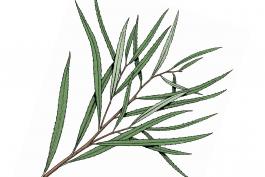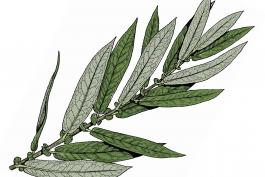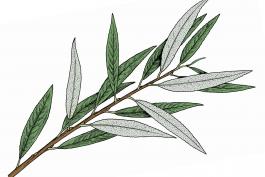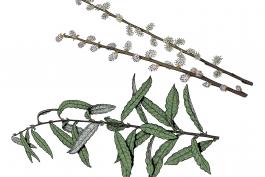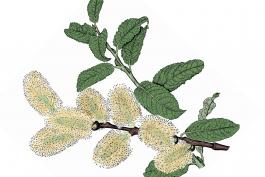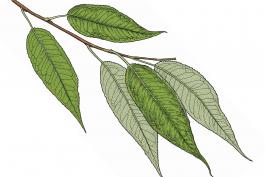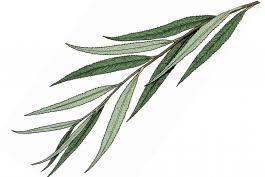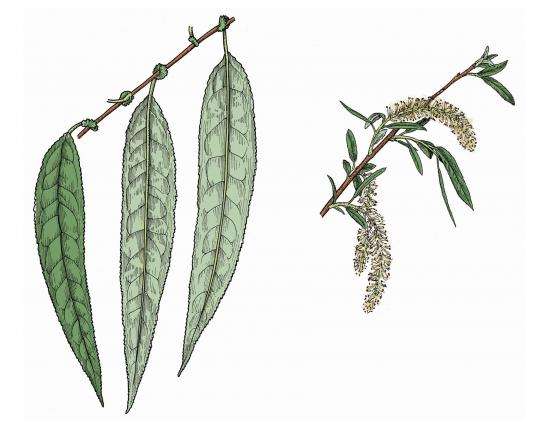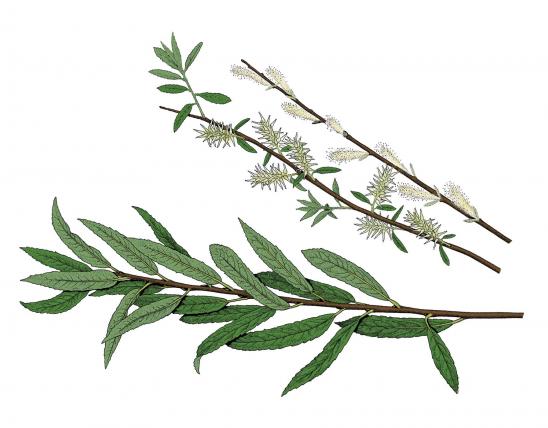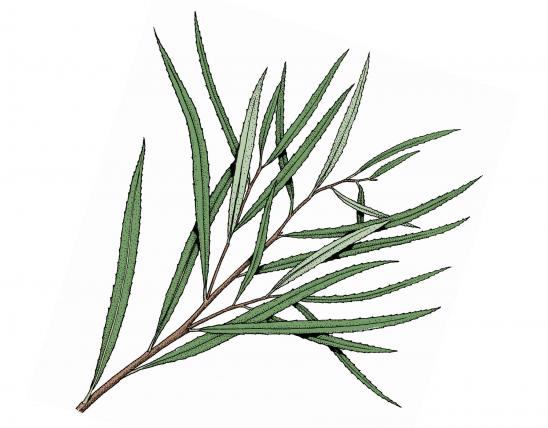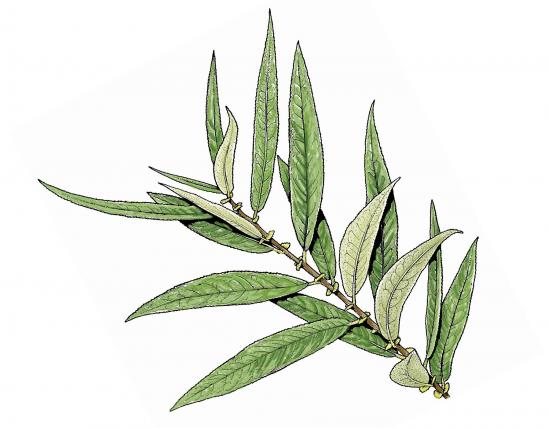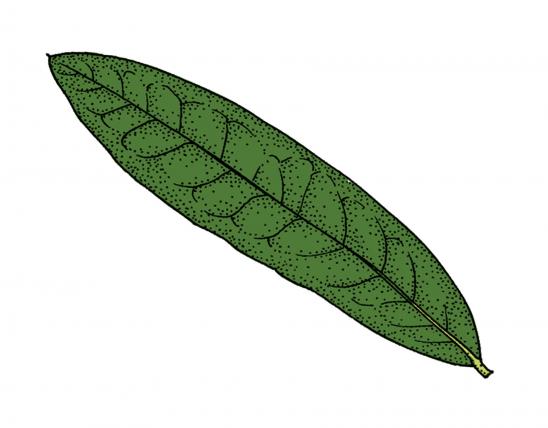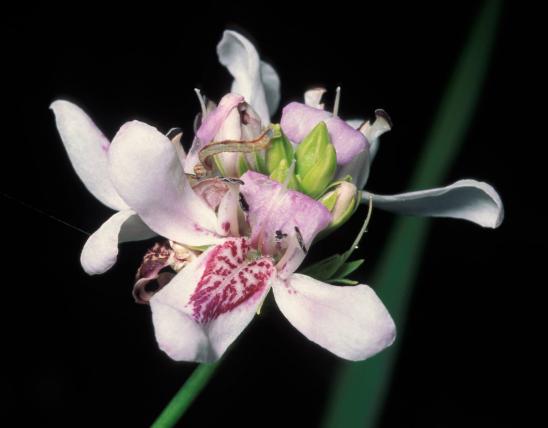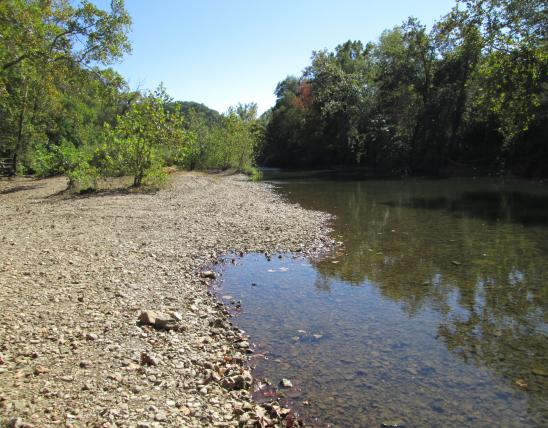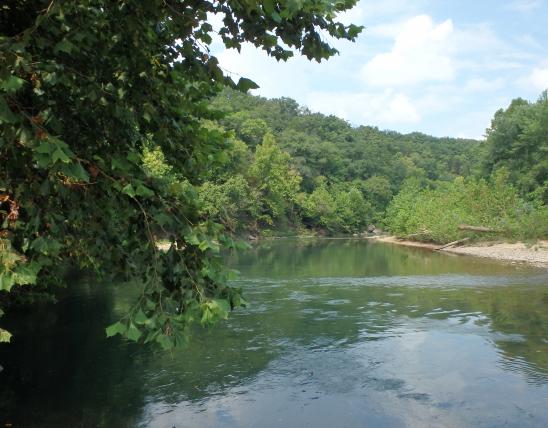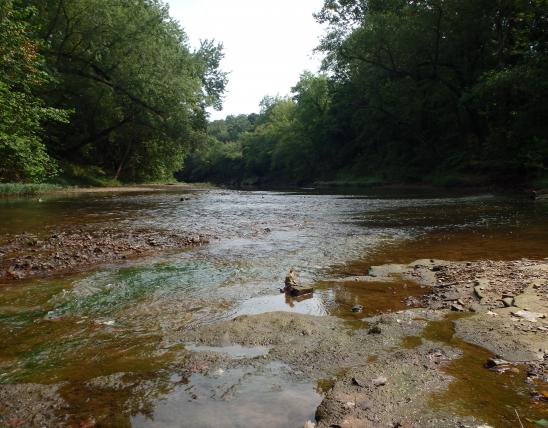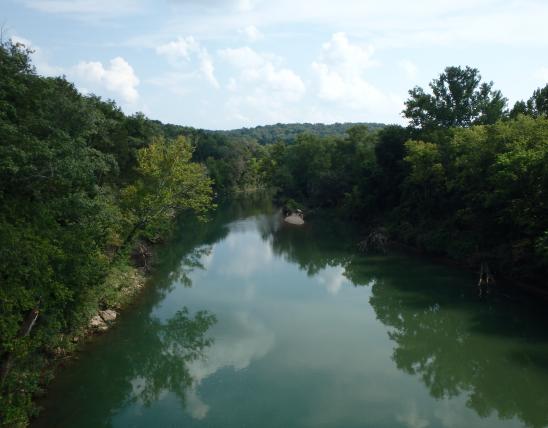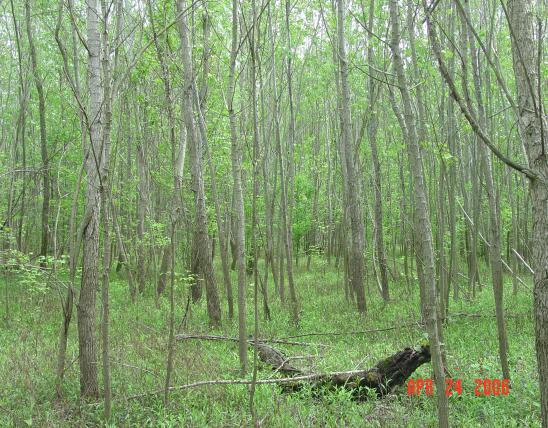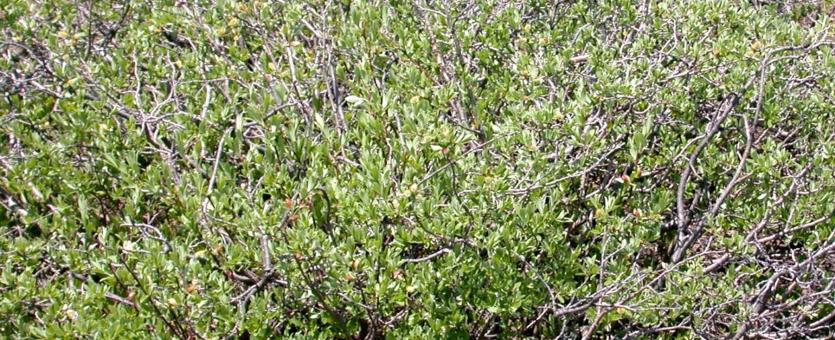
Willows are deciduous shrubs and trees in the genus Salix. They often form colonies.
Leaves have short stems and are usually narrow and long (lance-shaped or linear), with a rounded base and pointed tip, usually with teeth along the margin. Most Missouri species have alternate leaves.
Wood is often brittle, weak, and prone to breakage in ice and strong winds. Many willows are fast-growing, water-loving species.
Twigs are famously slender, tough, and flexible, hence the phrase "bend like a willow." Many willows can be grown from cuttings by simply sticking a willow branch into the soil.
Male and female flowers develop in separate catkins on separate plants (each willow tree bears either male catkins, or female catkins, but not both). (Catkins are a particular type of flower cluster: spikelike, often cylindrical, sometimes pendulous, rather tightly packed clusters of unisexual flowers.) Willow catkins are often hairy.
Fruits are capsules (often conical and brown or reddish) that develop in the female catkins; each capsule is filled with tiny seeds, often with hairs at the base.
About 12 species of willows grow naturally in Missouri, including at least 2 that were introduced from outside our borders. There are additional willows that are exotic cultivated species, including weeping willow (S. babylonica), but these are not known to survive for long out of cultivation.
Varies with species. Many willows are shrubs; some grow into medium or large trees.
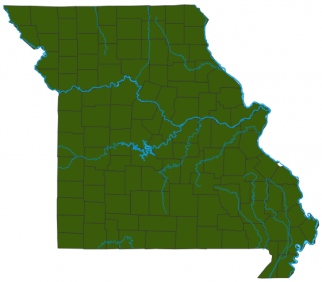
Willows can be found statewide. The different species have different habitats and distributions.
Habitat and Conservation
Willows occur in North America and Eurasia. There are many species, varieties, and hybrids. Willows are cultivated worldwide. Most Missouri willows are associated with wet or low-lying areas: floodplains, fens, streamsides, riverbanks, gravel bars, swamps, ditches, and so on. Some, however, like the prairie willow, prefer drier, upland areas, hill prairies, or open woods. Pussy willow and the (introduced) weeping willow are usually seen only in cultivation.
Human Connections
Willows have an extremely long history for medicinal uses, being used to treat fevers, aches, skin conditions, and headaches, and as an anti-clotting agent. The basic ingredient of aspirin, salicylic acid, originally came from willow bark (the chemical name comes from salix, the Latin word for willow). In the middle 1800s, scientists first synthesized acetylsalicylic acid, a biochemical derivative of salicylic acid. Then, a few years before 1900, the German company Bayer developed this compound as a commercial pain reliever, naming it "aspirin," which was the world's first mass-marketed drug. It remains one of the most-used medicines in the world.
Salicylic acid is also used in acne, psoriasis, wart, and callous treatments, and also in some dandruff shampoos and toothpastes.
When you think of the tremendous medicinal value of these plants, you must acknowledge that there may be many more important drugs "hidden" in plants that medical science simply has not yet discovered. This is one reason we must protect and conserve ecosystems and species worldwide.
Some willows have usable lumber, which tends to be rather soft but resistant to warping and splitting. Willow wood has been used for packing crates, palettes, furniture, cricket bats, and paper pulp.
Willow has been used for basketry.
Misbehaving children, in the past, were often disciplined by application of a willow switch.
Willows are planted to prevent erosion, as wind breaks, for bioremediation, and reclamation of severely impacted sites such as mines and quarries.
Many willows have ornamental value, but their fast growth causes weak, brittle wood. Their roots are notorious for invading sewer lines. Some willows are prone to diseases, too, so do some research before planting, and think carefully about placement.
In old-time Ozark dialect, the phrase "keep close to the willows" meant "to be conventional, conservative, or modest"; it apparently came from the habit of skinnydippers staying close to the trees to avoid being seen by passersby.
Ecosystem Connections
Willows play a huge role in bank stabilization and erosion prevention. As primary colonizers of seasonally flooded or otherwise highly disturbed, wet sites, they are tremendously important.
Animals ranging from tiny insects to large deer eat the plants.
Willows host a bewildering array of parasitic insects, whose larvae form galls on the stems and leaves. Prime examples of these insects include at least 200 species of sawflies, and many types of gall midges.
Beavers use willows in lodge construction and as food.
The shrubby growth of willow thickets provides cover and nesting habitat for innumerable species.
Willow roots, exposed in the water, provide shelter for many aquatic animals.
